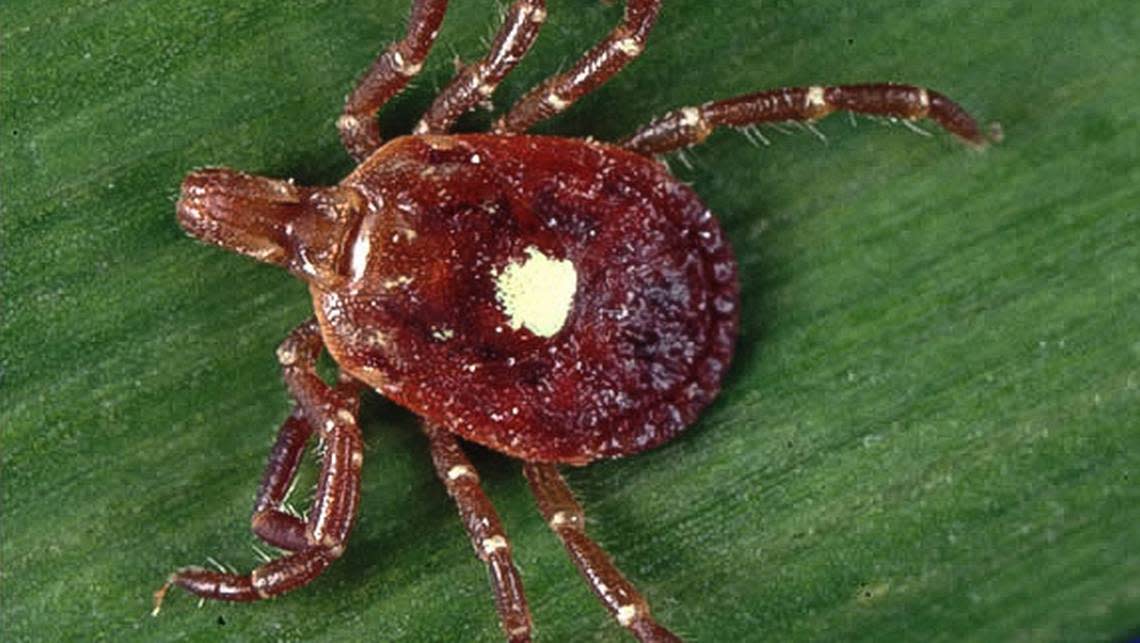Avoid blood-gushing SC ticks. Here’s how to remove them safely

South Carolina has its fair share of pesky, crawly critters during summer, but ticks are a particularly dangerous nuisance.
Their sole purpose is to gorge themselves on you or your pet’s blood. Meanwhile, four species of ticks in South Carolina are capable of spreading some nasty diseases. Medical experts say removing ticks quickly can help avoid getting infected. However, removing a tick incorrectly could make the situation worse.
Here’s how to safely remove ticks from family members and dogs.
Tick removal from family or friends
Tick removal must be done carefully. If the tick is accidentally squished, then the possibly infected blood inside it may splatter and spread disease.
According to the S.C. Department of Health and Environmental Control, ticks should be removed as soon as possible to prevent transmission of possible diseases.
“Disease transmission from ticks generally occurs within 24 hours or up to 72 hours after attachment,” DHEC states. “In general, the longer a tick is attached, the more likely it is to pass on an infection if it is carrying one.”
Tick removal tips
Don’t squeeze the tick or use heat, solvents, nail polish, petroleum jelly or other materials to make it detach from the skin. Such actions will likely cause the tick to regurgitate fluids into the bite, increasing the potential of disease transmission.
Use fine-tipped tweezers to remove a tick by grasping it as close to the skin’s surface as possible.
Pull upward with steady pressure. Be careful not to jerk or twist the tick, which could cause the mouthparts to break off and stay in the skin.
Clean the bite after removal with soap and water, then apply an antiseptic such as rubbing alcohol.
Write down the date of the bite to help monitor for any potential symptoms.
How to remove a tick from a dog
Dogs that spend any significant time outdoors will likely pick up some ticks each summer. According to the Humane Society, here’s how to safely remove ticks from your four-legged friend.
To search for ticks on your dog, run your fingers slowly over its entire body. If you feel a bump or swollen area, check to see if there’s a tick. Don’t limit the search to your dog’s torso. Check between their toes, around their legs, inside their ears and around their chin and neck.
Like with people, use tweezers to carefully and slowly remove the tick.
After removing the tick, use a disinfectant on the bite area.
Note the date the tick was removed and keep the tick in isopropyl alcohol. If your dog starts to show any symptoms of a tick-borne illness, your veterinarian may want to identify or test it.
Preventing future tick bites
Use repellents containing DEET, picaridin, IR3535 oil of lemon eucalyptus, para-menthane-diol or 2-undecanone. Treat clothing and gear, including boots, pants, socks and tents with products containing 0.5% permethrin.
Wear protective clothing tucked in around the ankles and waist.
Shower with soap and shampoo after being outdoors to reduce the risk of tick attachment.
Keep weeds and tall grass cut around your home and avoid tick-infested places such as grassy and marshy woodland areas.
Stay in the center of paths when hiking or walking in the woods.
Dogs
Comb your pet regularly with a flea comb, vacuum frequently and dispose of the bags immediately after use. Mow areas of the lawn where your dog spends time and wash its bedding weekly. Also, wash your dog with a pesticide-free pet shampoo.
Dangerous types of SC ticks
There are several tick species in the state, but some stand out as being far worse than others because of their ability to cause harmful illnesses in humans.
Here are four of the worst tick species in South Carolina and how to identify them.
The Blacklegged Tick
The blacklegged tick, also known as the deer tick, poses significant health risks. According to clemson.edu, this small but dangerous arachnid is a vector for Lyme disease, a debilitating illness that can lead to severe complications if left untreated. Found in wooded areas and grassy regions, the blacklegged tick has a distinctive reddish-brown body and darkened legs.
The Lone Star Tick
Recognizable by the distinctive single white dot on its back, the Lone Star tick can transmit various diseases, including ehrlichiosis and Southern tick-associated rash illness (STARI), MUSC Health states. It can also cause a red meat meat allergy in humans called alpha-gal syndrome. The Mayo Clinic states that a lone star tick bite can transmit a sugar molecule called alpha-gal into a person’s body. In some people, this can trigger “an immune system reaction that later produces mild to severe allergic reactions to red meat, such beef, pork, lamb or other mammal products.”
The American Dog Tick
Known for infesting dogs and other domestic animals, the American dog tick can also bite and cause harm to humans. This tick species carries Rocky Mountain spotted fever (RMSF), a potentially fatal disease if not treated promptly. Recognizable by its brown body with white or gray markings, the American dog tick is commonly found in grassy areas, wooded regions and along hiking trails.
The Gulf Coast Tick
Preferring warmer and more humid climates, the Gulf Coast tick is a common resident of South Carolina. This species poses a risk of transmitting Rickettsia parkeri rickettsiosis, a disease that leads to fever, headache, and rash. The Gulf Coast tick often targets humans and animals alike and it can be found in grassy and wooded habitats.
Signs and symptoms of tick-borne illnesses
According to MUSC, if you think you’ve been bitten by one of the above ticks, watch over the next 30 days for symptoms such as fever/chills, aches and pains in the joints or a rash around where the bite occurred. All tick borne diseases can be effectively treated with antibiotics but, the sooner the treatment the better, MUSC states.

